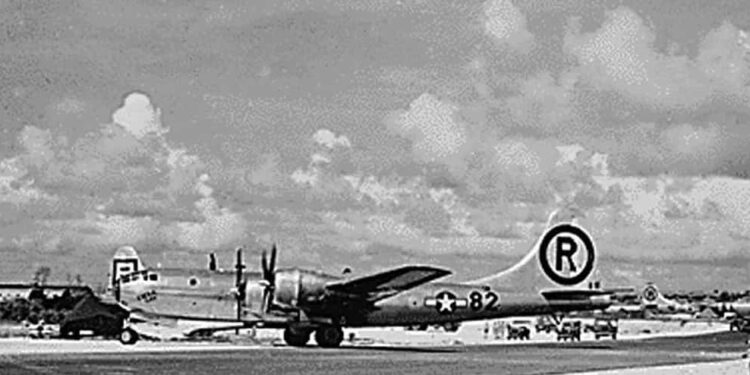It was from this small island lost in the Pacific that the plane set off to drop the bomb on Hiroshima took off on the morning of August 6, 1945. The Tinian military airfield, eaten away for decades by the jungle, is now being renovated by the American army.
To combat China’s growing influence in the Asia-Pacific, the United States is investing billions of dollars in new strategic sites, as alternative military bases that can be used in the event of an attack on its main infrastructure.
This policy, carried out with “a sense of urgency” according to Washington, responds to that, similar, of Beijing, which for years has transformed islets into military bases in the highly contested waters of the South China Sea.
But when China has to build its runways from scratch, with its feet in the water, “the rehabilitation of airfields from the Second World War gave the Air Force in the Pacific a means of rapid implementation infrastructure in the region,” a spokesperson for this branch of the Pentagon told AFP.
Thus, in Tinian, an American territory near Guam, the historic airfield in the north of the island “has a large covering under the overflowing jungle”. “We are going to clear this vegetation between now and next summer” to make it a “large” base, General Kenneth Wilsbach, commander of the US Air Force in the Pacific, recently told the Nikkei newspaper.
If it has already launched work near the current civilian airport, the American air forces have also renovated what was, in 1945, the most important airport on the planet.
There, 2,300 kilometers south of Japan, dozens of B-29s took turns on six takeoff and landing runways to tirelessly bomb the enemy empire.
Hastily built once the island was taken from the Japanese, this advanced base was then chosen for the first nuclear bombs. It was from this islet in the Mariana archipelago that, on August 6 and 9, 1945, the planes which dropped “Little Boy” and “Fat Man” on Hiroshima then Nagasaki took off, killing more than 200,000 people and bringing Japan to its knees.
Cheque book
Nearly 80 years later, the bulldozers are back in Tinian — this time with Beijing in their sights.
“China’s coercive and increasingly aggressive enterprise to reshape the Indo-Pacific region” represents “the greatest and most serious challenge to the national security of the United States”, noted in 2022 the document which sets the strategy of the American army for the years to come.
A power confrontation which pushes it to take out the checkbook to strengthen its positions in the region. Over the last three years, the annual budget allocated to American military construction in the Asia-Pacific has doubled, going from 1.8 billion in 2020 to 3.6 billion in 2023, according to a report by the Congressional Research Center.
The Pentagon’s approach is clear: multiply the bases to be more flexible and be able to operate outside the large existing American bases in Japan, South Korea and the island of Guam. Since 2011, this congressional report further notes, “the United States has negotiated access to 12 new defense sites in the Philippines and Australia” – including several from World War II.
“Take a nap and take off again”
“A large part of our strategy is to take back the airfields of the Second World War,” the head of the American air forces in the Pacific said in September during a conference. “We are raking out the jungle, and we have an airfield.”
“We don’t make huge bases,” insisted Kenneth Wilsbach. “We’re just looking to have a place where there’s fuel, weapons, maybe something to snack on, take a nap, so we can take off again.”
This is exactly the model applied in Tinian, where renovation work began in February 2022, first near the current airport, before then extending towards the former World War II airfield, from the north from the island.
It is in particular “a sense of urgency” which allowed the American army, with these new installations, to “improve the deterrence posture” in the region, the spokesperson told AFP. Air Force in the Pacific.
Within two years the rehabilitation of huge pieces of tarmac, to park planes, and the construction of fuel tanks must be completed in order to “ensure the capacity to fulfill mission objectives in the event that the air base of Andersen (in Guam) or other sites in the Western Pacific would become inaccessible,” according to financial documents from the American army. Budget: at least $162 million.



